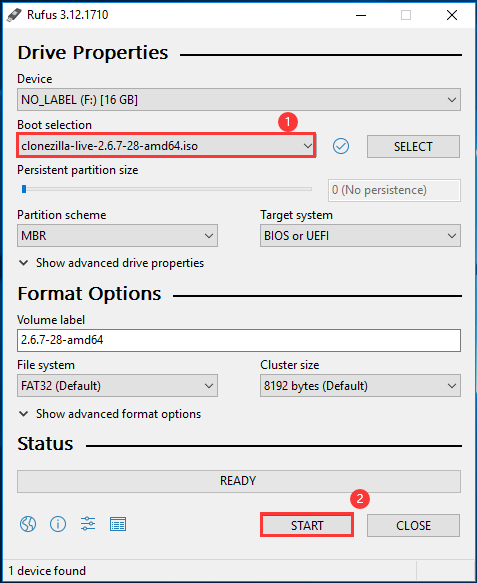

- WHAT IS CLONEZILLA ISO IMAGE HOW TO
- WHAT IS CLONEZILLA ISO IMAGE MANUAL
- WHAT IS CLONEZILLA ISO IMAGE SOFTWARE
- WHAT IS CLONEZILLA ISO IMAGE FREE
Clonezilla won’t support restoring an image from a large hard disk or partition to a smaller one.You can split images into multiple volume files to avoid maximum file-size limits.

WHAT IS CLONEZILLA ISO IMAGE FREE
Make sure the image repository has enough free space to store the data within the partition. For unlisted file systems, Clonezilla uses dd to copy all used and unused blocks.įor a successful migration, keep these tips in mind as you follow the steps in this article, and refer back to them as a summary. It has a customized capability for boot and recovery procedure.Ĭlonezilla Live uses such existing tools as Partition Image, ntfsclone, partclone, and dd to clone the partition or disk. CD/DVD, USB flash/hard drives, and PXE boots are supported. You don’t need a diskless remote boot server (Diskless Remote Boot in Linux, DRBL) in Linux to set it up, as you do with Clonezilla SE. It provides multiple file system and even LVM support, including ext2, ext3, xfs, jfs, and LVM2 under GNU/Linux FAT, NTFS under Microsoft Windows and HFS+ under Mac OS. It clones only the used blocks on the hard disk. Clonezilla Live is a more lightweight build for single-machine cloning.Ĭlonezilla Live is a combination of Debian Live and Clonezilla it has the following features and benefits: 
Clonezilla SE is best suited for backup and restoring multiple servers simultaneously across the network. There are two releases: Clonezilla SE (server edition) and Clonezilla Live. Introducing Clonezilla LiveĬlonezilla is an open source (GPL) Norton Ghost-like duplication and clone solution that you can use to clone a particular partition or entire disk. You may have to do some things differently to get them to work for your migration project.
WHAT IS CLONEZILLA ISO IMAGE SOFTWARE
Note: Virtual and physical systems hardware and software span a broad range, so the procedures in this article are meant as a reference guide. It’s simple and fast, and it should be useful for software developers, system administrators, and support engineers who want to analyze a system copy while maintaining the original one unchanged (and avoid possible hardware mismatch challenges). With Clonezilla Live, you first create a system image from the physical server, then use the boot CD to restore the image onto the virtual machine’s hard disk.
WHAT IS CLONEZILLA ISO IMAGE HOW TO
I’ll talk about those methods and show you how to convert a physical server to a virtual machine using Clonezilla Live, a cloning-based solution.
WHAT IS CLONEZILLA ISO IMAGE MANUAL
Several methods, manual and automatic, are generally available to facilitate P2V migration. I refer to the second process as physical-to-virtual migration, or P2V, and it’s the subject of this article.
If your system already exists in the physical state, you will probably want to migrate from the physical environment to the virtual one. If you are designing your system from scratch, you will likely implement virtualization from the ground up. The process for achieving virtualized server consolidation depends on your starting point: Virtualization solutions can have several benefits: they can let you easily migrate a virtual machine from one server to another, and let you provision a virtual as a reproducible clone image for, say,software development and testing. Thanks to two concepts driving the data center today-economy and green computing-server virtualization is a hot topic in the IT world and a lot of hardware and software vendors are offering solutions.







 0 kommentar(er)
0 kommentar(er)
